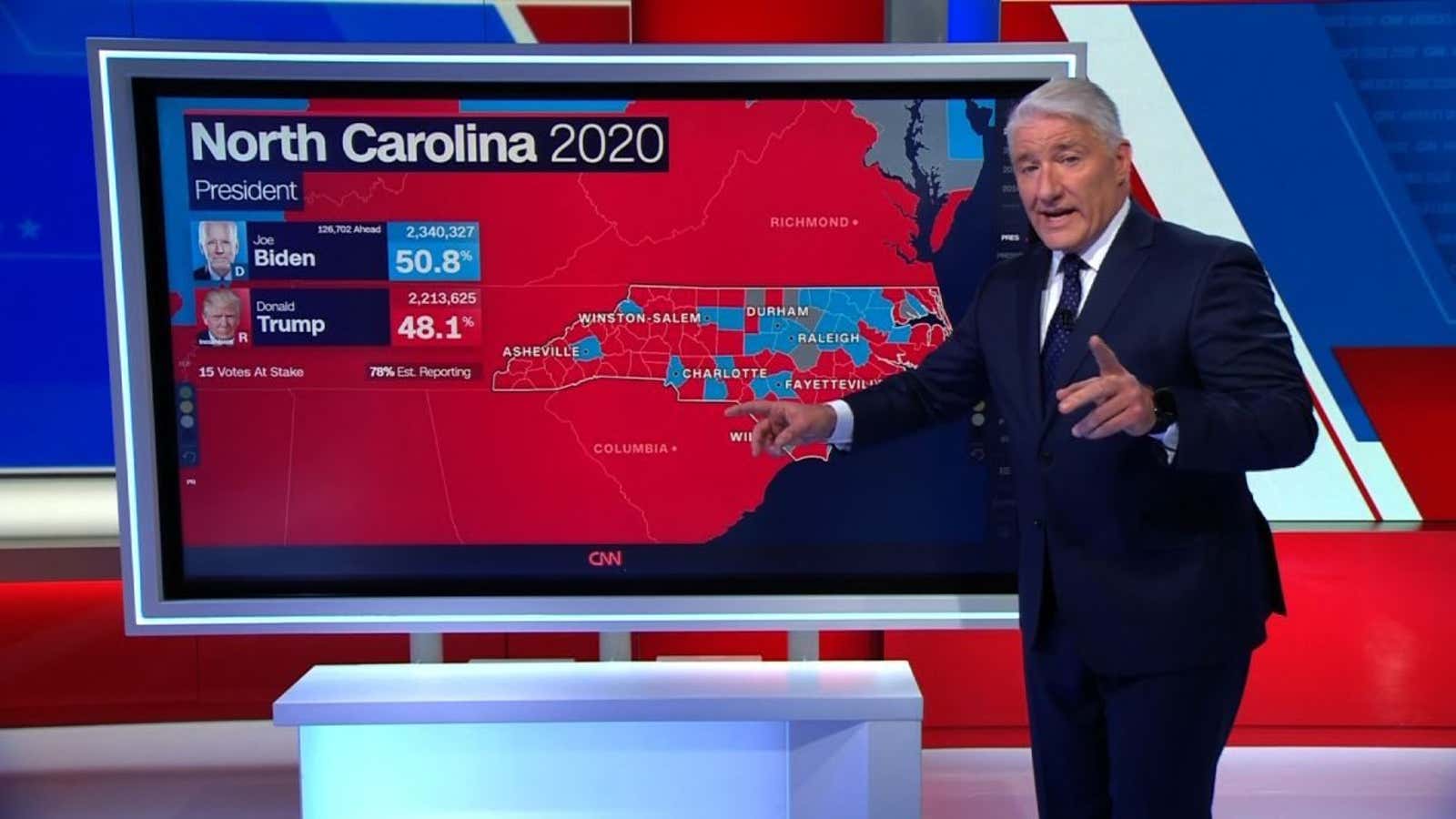A day after the US presidential election, several states are still undecided, as questions remain about when outstanding votes in certain places will be counted. But one thing was made clear, deep in the night on Nov. 3, in a CNN television studio somewhere in Washington, D.C.: John King is a machine.
The political analyst, who has served as CNN’s chief national correspondent since 2005, provided a nearly unbroken seven-hour firehose of electoral analysis, relaying results to viewers as they emerged. Around 7pm US eastern time, King assumed the position alongside the network’s “magic wall”—a touch screen that enables its operator to filter vote counts by the state and county levels and compare those to historical trends. He stood there analyzing this virtual map of the United States until roughly 2am, at which time his bosses at CNN may have permitted him to nap.
At 11am US eastern time today, King was back at the magic wall, looking no worse for wear.
The magic wall is not a new creation. Though the technology has improved over the years, King has used the tool every cycle since the 2008 presidential election. Most other networks have their own versions of the magic wall. On MSNBC, for instance, journalist Steve Kornacki, with his signature rolled-up sleeves, soothed viewers with live county-by-county analysis as the votes trickled in.
But this year, because of the unprecedented number of mail-in ballots, King and his magic wall took on a greater importance. Viewers needed to know which votes were absentee, which were made on election day, and, most crucially, what that all meant for which candidate was more likely to win each state. The magic wall revealed the votes; King contextualized them.
King’s spotlight on CNN was constant. While other networks cut to commercial and brought in panels of talking heads to discuss the results, CNN rarely broke away from the wall. King’s coverage, though it arguably did not provide the specificity with which some viewers were hoping to assess vote counts, was nonetheless measured. He frequently asked for viewers’ patience, telling them there was still much they didn’t know, even as the votes streamed in. And CNN, holding true to its word, was reluctant to call any states until it was virtually certain the races there were over.
The political analyst was almost an auctioneer, rattling off numbers all through the night, hardly taking a breath, trying desperately to stay ahead of the action. He exhibited an almost unfathomable memory of US counties in every swing state, no doubt formed over his 12 years as the magic wall maestro.
Led by analysts like King, this kind of county-by-county analysis—made possible by advancements in technology—is where TV network political coverage is headed. It is a fusion of the talking-head punditry of old, with the more data-oriented techniques of digital outlets like FiveThirtyEight, which prefer to let the numbers do the talking without much editorialization.
Years from now, long after the dust settles, the confusion clears, and a winner is determined, King’s marathon election-night analysis will be definitive picture of how the US news media navigated what was a chaotic election.
